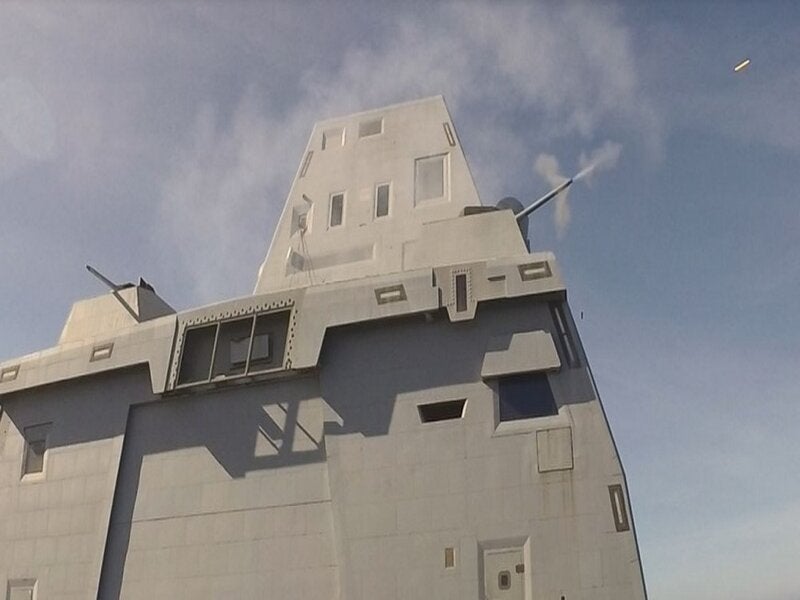
US Navy sailors aboard Zumwalt-class guided-missile destroyer USS Zumwalt (DDG 1000) have successfully concluded a structural test fire of the Mark 46 MOD 2 Gun Weapon System (GWS).
The work was executed by the sailors with engineers and technicians from US Navy Surface Warfare Centers on the Naval Air Weapons Center Weapons Division (NAWCWD) Sea Test Range in Point Mugu.
USS Zumwalt commanding officer Captain Andrew Carlson said: “The privilege of being a first-in-class ship includes having the opportunity to systematically conduct testing across the breadth of systems installed onboard the ship.
“The real plus is conducting those tests, such as today’s live fire with the Mark 46 GWS, which provide tangible evidence of combat capability maturation.”
Remotely operated naval gun system, the Mark 46 GWS, uses a 30mm high velocity cannon, an infrared sensor, a low light television camera, and a laser rangefinder to defend the vessel against small and high-speed surface targets.
The existing LPD-17 and LCS class ships are already equipped with the weapon system and have successfully operated it.
Following the delivery of the Combat System, test firing on board DDG 1000 was conducted within three weeks of delivery.
It was the first large caliber weapons firing event for the Zumwalt Class Destroyer Program.
The fire tests assess structural and electrical components of the ship against shock and vibration of the weapon firing. They also check for potential hazards to personnel or other equipment due to firing live ordnance.
The tests were conducted with coordinated effort between the Zumwalt Class Destroyer Program Office, the US 3rd Fleet, Commander, Naval Surface Forces, US Pacific Fleet, and the Naval Sea Systems Command (NAVSEA) Surface Warfare Centers located in Dahlgren, Virginia, Port Hueneme, California, and Indian Head, Maryland.
Designed and built to execute maritime missions, the Zumwalt-class destroyer is operational in the sea and near-shore environments.



